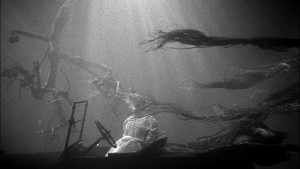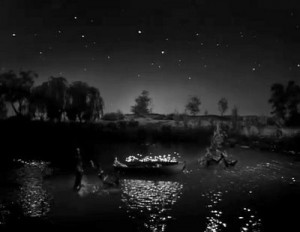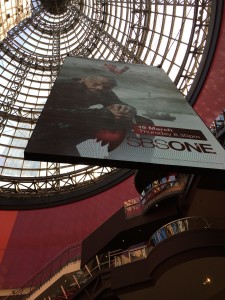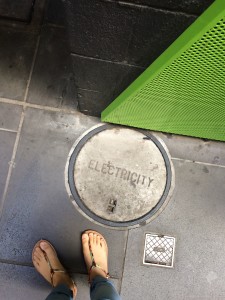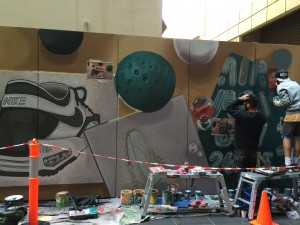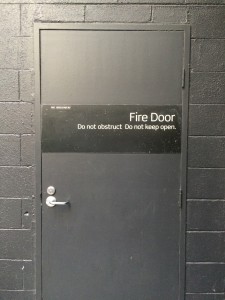There comes a final assessment in the popular culture course and there comes another annotated bibliography like the one we did in media 1 project brief 4. The references I am using are the articles read for my group presentation on feminism in music videos, an article of the Simpsons and on social media. Writing 1,500 words summary for three references is definitely not an easy one. Let alone this assessment worths 50% of the whole course. But I guess being in the habit of “critically analysing” texts is crucial for the rest of your life unless you don’t mind being somewhat unreliable. Though I’m grateful having learned this skill, while it helps to investigate and study the artefacts of popular culture across times in which I am looking forward to.
Uncategorized
A Whole New World
This weekend I went to ACMI Gallery after watching a kids 3D movie, Monster in Paris. Being a mentor in RMIT foundation studies mentoring program, I had to stick with this movie. But on the plus side, my fellow mentors and I get to discover the history of motion pictures in the exhibition. I’ve found the huge transparent “first” lucite television interesting, the first video game with that simplistic tennis simulator appealing and how we’ve managed to have the Thomas Edison peepholes at some point in history is somewhat outlandish. Though what had hauled me the most is the arrival of film, while observing how the invention of colour TV greatly impact film industries and the cinema. Films have been evolving as a result of the constant discoveries of past filmmakers and the invention of technologies. Like the Lumière brothers who invented a new photographic technology to project films into screen, George Méliès discovered yet another cinematic technique of special effects, adding significance to the film productions. Speaking of projections I did a mini abstract, black and white video using one of the exhibits just to see how cool it looks.

…Pop culture coming to an end.
Basically, our second last assignment in Popular Culture is a group project that needed to be presented in weeks 10 and 11. One thing that my group mates and I share is… that we’re all girls. So we had this super broad topic that we needed to research on, which was ‘music videos’ and thought that we could all make points on feminism in music videos including its history from the 80s, controversies, girl groups, individual female artists and dancing aspects. Like all other procrastinators out there, we started meeting up and had skype sessions weeks after we were introduced of the assignment and tend to practice the speech on the 7:40 AM before the pressie time. Even got a little bit confused whether or not we are presenting in week 10 or 11 to be honest. Yet, it turned out that we did pretty good covering our topic of how feminist artists came to be, what’s really behind Miley Cyrus’ expression in her “Wrecking Ball”, the obviously controversed “Blurred Lines” and etc. After all it was hell fun working with these girls, seeing that we would just have ONE more assignment to be done for the end of the semester!
Religious Conspiracy
Reading Log #6
How does the director, Charles Laughton construct the narratives of his film The Night of the Hunter (1995)?
The Night of the Hunter narrative is based on the cause and effect of character’s actions. Because both the boy’s father and the preacher Harry committed a crime, they have met in the prison. The event then leads to the father spilling information about the money he had hidden to the preacher. This sequence then causes Harry to hunt for the money in which the father’s son, John knows where he had hidden. This chain of events is an example of how narrative relies on causality.
Being that narratives also rely on time and space, how does the filmmaker manipulate the two principles into the film?
Charles Laughton has directed that the film plot will go on a chronological order, relating to its causality. Therefore, as the chain of events is presented in an order of chronological time, the story’s duration is about months in time. This is shown by the growth of the two young characters, John and Pearl, and their journey throughout their escape from the preacher Harry. Viewers can see that their journey took a few overnights from the time of the day that has passed as the two children stopped by places to ask for food. Laughton has also manipulated space with a film noir/German expressionist style to show the children’s escape through the lake. Within the frame, viewers see the children on the boat but infer that Harry is chasing them nearby from the sound and perception outside the frame. These are Laughton’s technique to manipulate the narratives of The Night of the Hunter.
Way back to the Monroe time
We all know who Marilyn Monroe is. The famous actress, model and singer. The famous pop art subject. The girl with a blown skirt.
But yesterday was the first time I have actually seen one of her films, Some Like it Hot (1959) by Billy Wilder. This black and white film is a romantic comedy with action sequences and reminded me of Keenen Ivory Wayans’ White Chicks (2004). How these two films are an intertextuality is that both main characters, two men are impostors to two women. In Some Like it Hot, the two men searches for a job but found one that needs women musicians, causing them to dress up as two girls. Similarly in White Chicks, two FBI agents are made up and impersonating two white girls. Both films also have a lady character which film theorist may call “femme fatale” and one of the two men ends up with the lady. While, the other man had to have a date with an attracted wealthy man. Finally, action sequences are present in both films. So there’s no such thing as an original idea. What if Wayans has actually seen Some Like it Hot and was inspired to direct his film? There’s always an adaptation in process of converting stories. From what I’ve listened in week 8 lectorial, that is why narratives have patterns of representation and expectation, as we as viewers have already experienced the ideas implemented through the stories.
One scene that I particularly like in Some Like it Hot is the musical performance scene where Sugar Kane (starred by Monroe) sings “I Wanna Be Loved By You”. This song has stuck on my head since then, which is quite annoying but interesting because it has made me appreciate its music as an art form of communication. Well clear to that, I’ve been singing it to my best friends.
Yaking
My friend introduced me to this new app called Yik Yak. Wow another social media. It’s pretty cool though, as it is a twitter-like app but the fact that we posts things anonymously makes it a lot less personal. Plus, safer I guess in a way that no one can stalk you that easily. Other “yakkers” could also vote on the posts or down-vote… Don’t take it too personally there yakkers! Having to determine our location, we can only vote or comment to those around us, as in those who are roughly in the same area as us. So, I thought I could try it out and download the app on my iPhone.
What I’ve posted there for the first time got 28 votes, which is okay and made me hyper for a while. So proud of myself! Jokes… It’s just that feeling when others like your idea or thoughts, to feel that you have entertained some in those social apps.
Peer Feedback on “Someone: Fun Found in Funny”
What feedback have I got for the brief 3 Media portrait of someone?
What is good about the portrait is how my shots look, especially the filters for the credits background. My peers also like the comedic side in the narrative, thought it is funny to compare the person with found footage animals. The music also gives humour which adds the matching footages of Samuel’s actions and the actions of animals presented.
The portrait could be better if there is and indication or a connection between the plane footages among the others. As it is unclear that planes are the interests, the footages of Samuel picking fossils on the beach could be shown clearer by indicating that he is a geology student. Therefore, what could have been done is recording an interview and actually telling the audience about who Samuel is rather than showing a pure ambiguity on screen.
Coloured Hats – “Selfie” Feedback
What is with the De Bono guy and his 6 hat system?
Well, we’ve used his system in a group to give each other feedbacks regarding our first “Lofi Self-Portrait” assignment. In our week 3 practical, only four hats are used and the feedbacks received are: Continue reading
‘Media is Everywhere’
Week 2 Lectorial
My Group and I went to Melbourne Central to notice and record ALL mediated interactions we’ve encountered. What I’ve found…
Up High
On the Ground
Background
Posters
Mid-Ground/ Foreground
Advertisement Video
In My Hand
Smart Phone
Bracelet
Dear Future Self…
I will be:
Contributor in the filming industry
industry
Free to express my creative & artistic self
& artistic self
Know how to use editing tools
tools
Widely related to other networks
Understand media texts to know myself deeply
Meet famous inspirations
famous inspirations
Be an inspiration
A Cinema Studies professional
professional
Not stop learning
stop learning
… and finally …
…
SUCCESSFUL
By the end of this degree.






